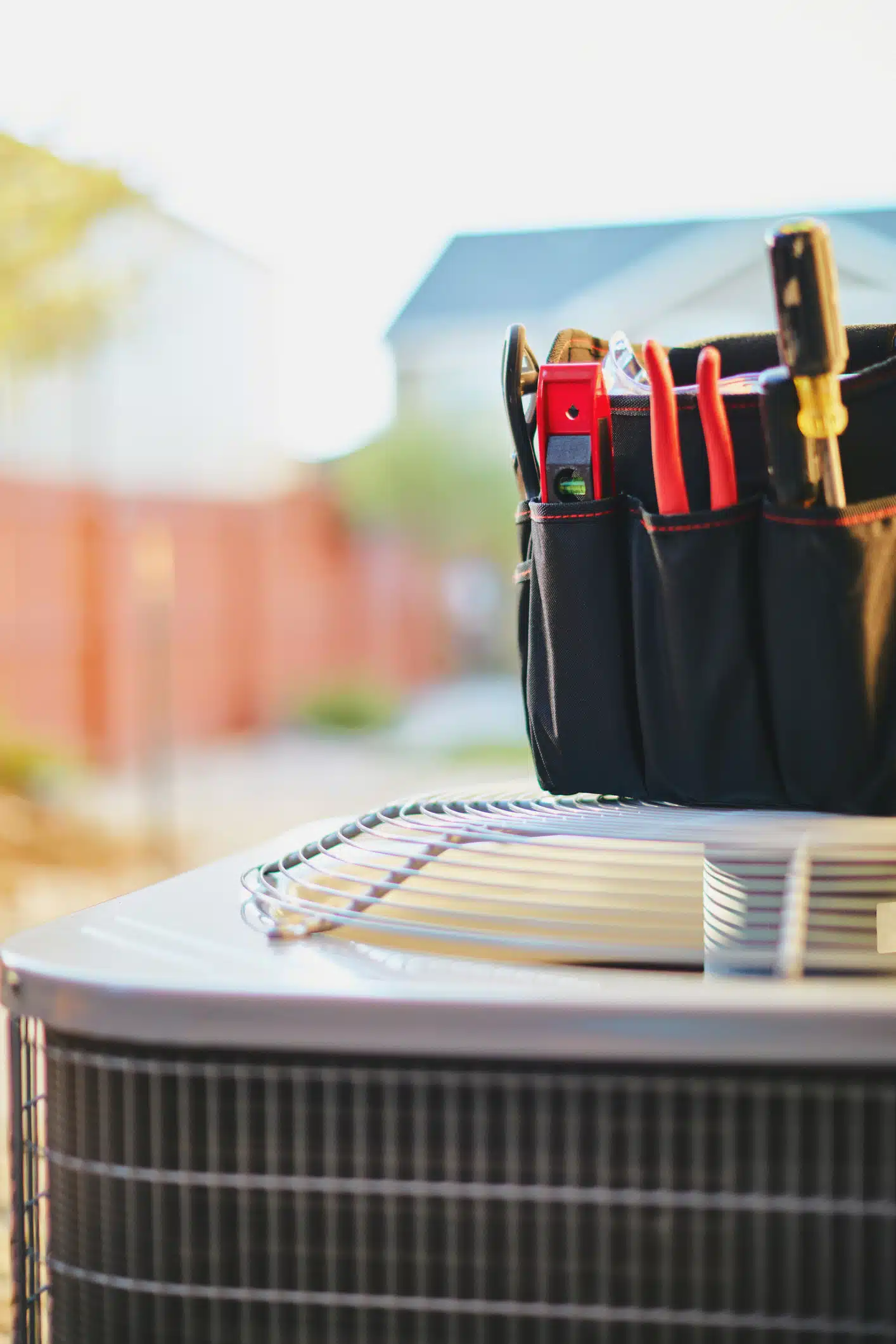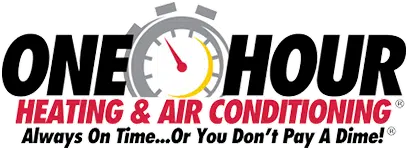Is your home in Lancaster, Pennsylvania, truly ready to tackle the unpredictable temperature swings and air quality shifts that come with each new season? Seasonal changes can easily disrupt the comfort and tranquility of your living space.
Without proper preparation and expert Heating and Cooling Services, your home may struggle to maintain the cozy environment you deserve.
This guide will arm you with essential strategies and professional advice to ensure your home remains a haven of comfort, no matter the season.
Understanding Seasonal Shifts and Their Impact on Indoor Comfort
What Are Seasonal Shifts?
Seasonal shifts in Lancaster, Pennsylvania, bring dramatic changes in temperature, humidity, and sunlight. These shifts have a direct impact on your home’s indoor comfort, making it essential to adapt your living environment accordingly. Without proper adjustments, your home’s comfort and air quality can suffer, affecting your overall well-being.
Impact on Indoor Comfort
Each season challenges your home’s ability to maintain indoor comfort.
Winter’s dry air can strain your heating system, leading to uneven temperatures and potential health issues.
Spring introduces allergens that can compromise indoor air quality, making it harder to breathe easily.
Summer’s heat pushes your cooling system to its limits, risking breakdowns and discomfort.
In the fall, cooler temperatures can cause condensation and mold, further disrupting your indoor comfort. Your home’s ability to maintain a comfortable environment is tested year-round.
Challenges Faced
Seasonal shifts in Lancaster make maintaining consistent indoor comfort a challenge. Issues like condensation, uneven heating and cooling, and poor air quality can disrupt your living environment.
Proactively managing your Heating and Cooling Services is crucial for ensuring your home remains a sanctuary of indoor comfort and health throughout the year.

Preparing Your HVAC System for Seasonal Changes
Routine HVAC Maintenance
As seasons change, maintaining your HVAC system is essential to ensure consistent indoor comfort. A comprehensive check-up, including diagnostics, cleaning, and calibration, helps identify issues before they become costly repairs.
Professionals inspect key components, clean or replace filters, and test operations to keep your system running smoothly.
For a DIY approach, check thermostat settings, clear debris from outdoor units, and replace filters regularly, but consult a professional if anything seems amiss to protect your indoor comfort.
Filter Replacement
Regular filter replacement is crucial for maintaining indoor comfort and air quality. HEPA filters are ideal for trapping allergens, while electrostatic and pleated filters offer year-round protection.
Replace filters every one to two months during heavy use seasons and every three months in milder periods to reduce strain on your system and ensure optimal indoor comfort.
Thermostat Settings
Proper thermostat settings significantly impact your energy bills and indoor comfort. Adjust settings seasonally to optimize performance—lower on winter nights and higher on summer days when the home is unoccupied. Modern thermostats allow for programmable temperature changes, ensuring comfort while minimizing energy consumption.
Enhancing Indoor Air Quality
Humidity Control
Balanced humidity is key to indoor comfort. Use whole-house humidifiers in winter to add moisture and dehumidifiers in summer to remove excess humidity.
These devices, integrated with your HVAC system, help maintain comfort and health year-round.
Air Purification
Enhance indoor comfort with air purification methods like UV lights, ionizers, and activated carbon filters. Place purifiers in high-traffic areas to keep the air clean, reducing allergens and improving overall comfort.
Sealing Leaks and Insulation
A well-insulated home is critical for maintaining indoor comfort and reducing energy costs. Air leaks and poor insulation can lead to significant heat loss in the winter and heat gain in the summer, forcing your HVAC system to work harder than necessary.
Conducting a home energy audit is the first step in identifying areas where your home may be losing energy. This audit can be done professionally or as a DIY project using simple tools like a thermal camera or a smoke pencil.
Once leaks and insulation gaps are identified, take steps to seal them. Caulking around windows and doors, adding weather stripping, and insulating attics and walls can make a noticeable difference in your home’s energy efficiency.
Upgrading insulation not only reduces energy bills but also enhances indoor comfort across seasons by maintaining a consistent indoor temperature and reducing the workload on your HVAC system.
Managing Temperature Fluctuations During Transition Months
Layered Temperature Control
As temperatures fluctuate during transition months, maintaining consistent comfort can be challenging. One effective approach is implementing layered temperature control through zone heating and cooling.
This method allows you to adjust temperatures in different areas of your home independently, ensuring that each zone remains comfortable despite varying conditions.
For example, in homes with open floor plans or multi-level layouts, thermal zoning can be particularly beneficial. Installing dampers within your ductwork enables you to direct airflow precisely where it’s needed, reducing energy waste and improving comfort.
Ductless mini-split systems offer another practical solution, providing localized heating or cooling to specific rooms without the need for extensive ductwork. These systems are ideal for homes with inconsistent temperature distribution, such as those with large windows or sunrooms that tend to heat up or cool down faster than the rest of the house.
Smart vents can further enhance your zoning strategy by automatically adjusting to maintain desired temperatures in different rooms.
By closing off vents in unused areas, you can prevent unnecessary energy consumption while ensuring that occupied spaces remain at optimal comfort levels. Implementing these layered temperature control methods can significantly improve your home’s efficiency and comfort during transition months.
Smart Thermostats
Smart thermostats have revolutionized how we manage indoor temperatures, especially during seasonal transitions. These advanced devices offer a range of features designed to maximize comfort and energy efficiency.
For instance, many smart thermostats now come equipped with voice control, allowing you to adjust settings hands-free. Geofencing technology can automatically adjust your home’s temperature based on your location, ensuring that your home is always comfortable when you arrive.
Energy usage analytics provided by smart thermostats offer valuable insights into your HVAC system’s performance, helping you identify areas where you can save energy without sacrificing comfort.
To maximize these features, take advantage of the customization options available. For example, you can set different temperature schedules for weekdays and weekends or create specific comfort zones that cater to individual preferences.
During transition months, when outdoor temperatures can vary widely throughout the day, smart thermostats can adapt quickly, ensuring consistent indoor comfort.
By leveraging these technologies, you can create a seamless and responsive environment that adjusts automatically to the changing seasons.
Supplementary Heating and Cooling
During transition months, supplementary heating and cooling devices can be invaluable in managing temperature fluctuations. Portable HVAC solutions, such as window units, space heaters, and portable air conditioners, offer flexibility and targeted comfort.
For instance, a portable air conditioner can provide cooling relief during an unexpected late-season heatwave, while a space heater can keep a chilly room warm without having to adjust the entire home’s heating system.
However, while these devices are convenient, it’s important to use them safely. Always follow the manufacturer’s guidelines, especially when it comes to placement and ventilation.
Avoid using space heaters near flammable materials and ensure that window units are securely installed to prevent drafts. Additionally, be mindful of energy consumption—supplementary devices can be energy-intensive, so use them judiciously during transition periods when temperature swings can be unpredictable.
Energy Efficiency Tips for Seasonal Comfort
Optimizing Energy Use
Maintaining comfort during seasonal transitions doesn’t have to come at the cost of increased energy bills. There are several strategies you can implement to optimize energy use while keeping your home comfortable.
Start by fine-tuning your HVAC system’s runtime. Rather than running your system constantly, consider using programmable or smart thermostats to manage heating and cooling based on your schedule. This approach can significantly reduce energy consumption without compromising comfort.
Incorporating energy-efficient lighting and passive solar design elements can further enhance your home’s efficiency. Energy-efficient windows and doors play a crucial role in maintaining consistent indoor temperatures, preventing heat loss in the winter and heat gain in the summer.
Upgrading to double or triple-pane windows with low-emissivity coatings can make a noticeable difference in your home’s energy performance.
Solar Gain and Natural Ventilation
Harnessing solar gain in winter and utilizing natural ventilation in summer are effective strategies for maintaining seasonal comfort. During the winter, solar gain can be maximized by using solar shades and awnings that allow sunlight to warm your home naturally.
In the summer, operable windows and strategically placed fans can enhance natural ventilation, reducing the need for air conditioning.
Combining these methods with other energy-saving strategies, such as using ceiling fans, can further reduce energy consumption. Ceiling fans can circulate air more effectively, allowing you to raise the thermostat setting in the summer without sacrificing comfort. Similarly, in the winter, reversing the direction of ceiling fans can help distribute warm air more evenly throughout your home.
Seasonal Adjustments
Small, seasonal adjustments can lead to significant savings and improved comfort throughout the year. For instance, reversing the direction of your ceiling fans can help maintain a comfortable temperature by either pushing warm air down in the winter or lifting cool air in the summer.
Changing curtains or adding thermal drapes can also help regulate indoor temperatures by preventing heat loss or gain through windows.
Rearranging furniture to optimize airflow is another simple yet effective strategy. Ensure that vents and radiators are not obstructed by furniture, which can impede airflow and reduce the efficiency of your heating and cooling systems. These minor adjustments can enhance your home’s comfort and contribute to energy savings over time.
Long-Term Strategies for Year-Round Comfort
Home Insulation and Weatherproofing
Investing in advanced insulation and weatherproofing is one of the most effective long-term strategies for maintaining year-round comfort.
Options such as spray foam and rigid foam boards offer superior insulation, reducing heat transfer and keeping your home’s interior temperature consistent. These materials are particularly beneficial in areas with extreme temperature variations, providing a thermal barrier that enhances comfort and reduces energy costs.
Weatherproofing your home’s doors and windows is equally important. Installing draft stoppers, weatherstripping, and storm doors can seal off potential air leaks, preventing cold drafts in the winter and keeping cool air inside during the summer.
A step-by-step approach to weatherproofing, including a thorough inspection and targeted upgrades, can dramatically improve your home’s energy efficiency and comfort levels.
Landscaping for Comfort
Strategic landscaping can play a significant role in enhancing home comfort while reducing energy usage. Shade trees, for instance, can block the sun’s rays during the summer, reducing the need for air conditioning.
In the winter, windbreaks such as dense shrubs or fencing can protect your home from cold winds, minimizing heat loss and reducing the demand for your heating system.
Reflective surfaces, such as light-colored roofing materials or pavement, can also help mitigate the heat island effect, keeping your home cooler in the summer.
By planning and implementing a landscaping strategy that aligns with seasonal needs and local climate conditions, you can create a more comfortable and energy-efficient living environment.
Upgrading HVAC Systems
Upgrading your HVAC system is a long-term investment that can significantly enhance comfort and energy efficiency.
Modern HVAC technologies, such as variable refrigerant flow (VRF) systems, geothermal heat pumps, and ductless mini-splits, offer superior performance compared to traditional systems. These technologies provide precise temperature control, reduced energy consumption, and improved indoor air quality.
When considering an HVAC upgrade, it’s essential to evaluate the cost-benefit ratio. While the initial investment may be higher, the potential energy savings, improved comfort, and enhanced indoor air quality can make it a worthwhile investment over time.
Additionally, many modern systems are eligible for energy rebates and incentives, further offsetting the cost of installation.
Searching for a reliable HVAC company that truly values your home comfort?
Look no further than One Hour Heating & Air Conditioning of Lancaster, PA. We stand out by prioritizing customer satisfaction and offering prompt and professional service every time. Our highly trained technicians ensure that your HVAC needs are met with precision, and our 100% satisfaction guarantee gives you confidence in our work. We respect your time with our punctual service.
We also provide a full range of heating and cooling services, from installations to emergency repairs, all tailored to your specific needs. Plus, our energy-efficient solutions help lower your utility bills while enhancing your home’s comfort. With transparent pricing, you’ll always know the cost upfront.
Choose One Hour Heating & Air Conditioning of Lancaster, PA, and experience the difference in quality, punctuality, and commitment to your comfort.
Conclusion
Maintaining indoor comfort during seasonal shifts in Lancaster, Pennsylvania, requires proactive HVAC maintenance, smart thermostat use, and effective zone heating and cooling. Coupled with professional Heating and Cooling Services, these strategies ensure your home stays comfortable and energy-efficient year-round.
A comfortable home is an investment in well-being and energy savings. In Lancaster, Pennsylvania, taking steps now, such as maintaining your HVAC system with expert help, will ensure consistent indoor comfort throughout the year.
Schedule a comprehensive HVAC evaluation or energy audit with One Hour Heating & Air of Lancaster, PA to ensure year-round indoor comfort. Contact us today to get started.

FAQs About Indoor Comfort
-
How often should I schedule HVAC maintenance?
It’s recommended to schedule HVAC maintenance twice a year—once in the spring before the cooling season and once in the fall before the heating season. Regular maintenance not only ensures your system operates efficiently but also helps maintain optimal indoor comfort by reducing the risk of unexpected breakdowns and extending the lifespan of your equipment.
-
What temperature should I set my thermostat to during transition months?
During transition months, aim to set your thermostat between 68-72°F during the day for optimal comfort. At night, lowering the temperature by a few degrees can enhance sleep quality and reduce energy consumption. This balance helps maintain indoor comfort while also being energy efficient.
-
How can I improve air quality in my home during seasonal changes?
Improving air quality during seasonal changes is key to maintaining indoor comfort. Here’s how:
Regularly change HVAC filters: This prevents dust, pollen, and other pollutants from circulating in your home.
Use air purifiers: These devices can remove airborne contaminants and allergens, enhancing air quality.
Manage humidity levels: Keep indoor humidity between 30-50% to prevent mold growth and maintain comfort.
Ensure proper ventilation: Open windows or use exhaust fans to let in fresh air and reduce indoor pollutants.
-
What are the signs that my home is poorly insulated?
Signs of poor insulation can significantly impact indoor comfort and include:
Uneven temperatures between rooms: Some rooms feel much hotter or colder than others.
High energy bills: Your heating or cooling system works harder to maintain a comfortable temperature.
Drafts near windows and doors: You can feel cold air entering or warm air escaping.
Difficulty maintaining a consistent indoor climate: The temperature fluctuates frequently, making it hard to stay comfortable.
-
Is it worth investing in a smart thermostat for seasonal comfort?
Yes, investing in a smart thermostat is worth it for several reasons:
Energy Efficiency: Smart thermostats learn your schedule and adjust temperatures automatically, reducing energy waste while maintaining indoor comfort.
Convenience: You can control the thermostat remotely via a smartphone app, ensuring your home is comfortable when you arrive.
Detailed Energy Reports: Many smart thermostats provide insights into your energy usage, helping you make informed decisions to optimize comfort and savings.





